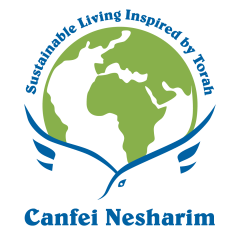By: Ben Schott, Student, SUNY Environmental Science & Forestry
Everyone thinks of Tu b’Shevat as a good time for planting in Israel. We can also use this time of year to explore planting in our own neighborhoods. You can make a difference in your community as part of a growing effort to re-plant our cities and suburbs with native plants and trees.
Planting around your home and city can offer economical and environmental benefits, from lower utility bills to clean air and water. Urban greenery provides aesthetic, as well as functional value to the local community. Around your home, a well planned out landscape and well cared for trees can even raise the monetary value of your property. The National Arbor Day Foundation reports that healthy, mature trees can add 15% or more to the value of your home.
Scholarly research and fieldwork have repeatedly proven the economic, social, and environmental benefits of landscape planning. Urban trees provide shade, increase the visual appeal of living and working spaces, and offer a certain degree of “escape” from the rush and repetitiveness of daily life. Adding trees and planting native gardens in the right places around your home can shade your house during the summer, saving energy from air conditioning costs.
Urban greenspaces even have the potential to filter out other pollutants caused by human activities. Over time, trees sequester carbon dioxide from the atmosphere, helping to stabilize micro-climates. Shade from trees can extend the life of paved surfaces, improve the sustainability of the economy, increase real estate value, and can even have positive psychological affects on people.
At the Lawrence Berkeley National Laboratory, in Berkley, California, science has shown that an increase in plants, such as trees, can mitigate what is known as the “heat-island effect” in cities. The heat-island effect is a phenomenon caused by more energy absorbed from the sun in city or suburban landscapes then what would absorbed in a natural setting. It works this way: Light energy is radiated from the sun onto the Earth. When this energy hits surfaces on the earth, some of this energy is absorbed, and some is released back into the atmosphere, but now in the form of heat energy. The EPA takes this issue seriously, as elevated temperatures can impact communities by increasing peak energy demand, air conditioning costs, air pollution levels, and heat-related illness and mortality. You can learn more about heat-islands online at, http://www.epa.gov/heatislands/about/index.html.
When you plan to plant in your home, or maybe as a community project in a park, first make sure that the species that are being planted are native to your area. Native species use natural resources, like sunlight and water, most efficiently for your climate. They are also most suited for the soil type and help sustain local wildlife. Maintaining a garden of native species will require much less maintenance then will exotic plants. Wildlife, attracted by native species of plants, will even help to replenish nitrogen in the soil.
There are many useful resources to find out what plants are indigenous to your area:
¢ Online, visit EPA
¢ Visit your local nursery to request advice
¢ Explore native plants at your public library
¢ Call a local landscaping company
¢ Additionally, some states, like Illinois (which is known for a dramatic loss in native species), have embarked on programs to encourage individuals and corporations to go native. Try visiting your state web page to see what programs might be available.
When is the best time to plant? This too varies for different types of plants and where you live. Climate, availability of sunlight, soil type, and water availability are the determining factors of what and where to plant. There is so much literature on gardening that it may seem overwhelming at times. The most important thing is to think locally. Keep these three questions in mind:
1. Are these plants native to my area?
2. In what way will these plants help the local wildlife?
3. Are these plants compatible with my:
– Soil type
– Water availability
– Amount and intensity of sunlight
Now that you have learned what to plant and when, the next step is to create a beautiful, native garden of trees, shrubs, grasses, and flowers. In your landscaping plans, which can be as simple as jotting some lines and circles down on a re-used piece of paper, draw out what you would like to see around your house. This is where you should consult your local landscaping company for support.
If a landscape is planned with the knowledge gained from steps one and two, you can have a self-sufficient garden. Plants work collectively with wildlife, like birds and butterflies to keep each other in good health. This is the difference between a low-maintenance, native garden, and a high maintenance, energy and resource intensive lawn.
The smallest steps can result in some very large changes. Ponder how and where you can plant trees in your yard that would shade your house, lawn, and driveway. Experiment replacing high-maintenance, water-intense lawns with attractive, self-sustaining native gardens. You can even make this into a learning activity with your children or family; its fun and eco-friendly. By using this information to make smart changes in the way you care for your home, you will also be caring for your community and our world.
Great Online Resources:
EPA
eNature
Wild Ones
Notes:
1. http://www.arborday.org/trees/benefits.cfm
2. http://www.coloradotrees.org/benefits.htm
3. “Cool surfaces and shade trees to reduce energy use and improve air quality in urban areas,” H. Akbari M. Pomerantz and H. Taha. To view the abstract of the article referenced, visit http://dx.doi.org and enter the Digital Object Identifier for the article, doi:10.1016/S0038-092X(00)00089-X
4. See http://www.epa.gov/heatislands/
Originally posted in “On Eagles Wings” January 31st 2007
